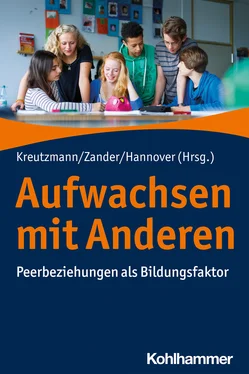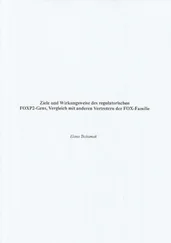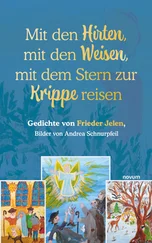Helmke, A. (2017). Unterrichtsqualität und Lehrerprofessionalität: Diagnose, Evaluation und Verbesserung des Unterrichts (7. Aufl.). Seelze-Velber: Klett/Kallmeyer.
Henke, T., Bogda, K., Lambrecht, J., Bosse, S., Koch, H., Maaz, K. & Spörer, N. (2017). Will you be my friend? A multilevel network analysis of friendships of students with and without special educational needs backgrounds in inclusive classrooms. Zeitschrift für Erziehungswissenschaft, 20, 449–474.
Henke, T., Zander, L. & Baumert, J. (2020). Academic peer networks in schools with two-way immersion and schools with monolingual teaching practice. In N. McElvany, W. Bos, H.G. Holtappels, J. Hasselhorn & A. Ohle-Peters (Hrsg.), Against the Odds – (In)Equity in Education and Educational Systems (S. 165–183). Münster: Waxmann.
Herz, A. (2014). Forgotten and future connections between social network research and educational research. Zeitschrift für Erziehungswissenschaft, 17, 241–256.
Hesse, I. & Latzko, B. (2017). Diagnostik für Lehrkräfte (3., vollst. überarb. und erw. Aufl.). Toronto: UTB.
Huitsing, G. & Veenstra, R. (2012). Bullying in classrooms: Participant roles from a social network perspective: Social networks and participant roles in bullying. Aggressive Behavior, 38, 494–509.
Kindermann, T. A. & Gest, S. D. (2018). The peer group. Linking conceptualizations, theories, and methods. In W. M. Bukowski, B. P. Laursen & K. H. Rubin (Hrsg.), Handbook of peer interactions, relationships, and groups (2. Aufl., S. 84–105). New York: Guilford Press.
Knoke, D. & Yang, S. (2008). Social network analysis. Los Angeles, CA: SAGE.
Kromrey, H., Roose, J. & Strübing, J. (2016). Empirische Sozialforschung (13., vollst. überarb. Aufl.). Stuttgart: UTB.
Krull, J., Wilbert, J. & Hennemann, T. (2018). Does social exclusion by classmates lead to behaviour problems and learning difficulties or vice versa? A cross-lagged panel analysis. European Journal of Special Needs Education, 33, 235–253.
Krempel, L. (2011). Network visualization. In J. Scott & P. J. Carrington (Hrsg.), The SAGE handbook of social network analysis (S. 558–577). London: SAGE.
Krull, J., Wilbert, J. & Hennemann, T. (2014). Soziale Ausgrenzung von Erstklässlerinnen und Erstklässlern mit sonderpädagogischem Förderbedarf im Gemeinsamen Unterricht. Empirische Sonderpädagogik, 6, 59–75.
Lusher, D., Koskinen, J. & Robins, G. (Hrsg.). (2013). Exponential random graph models for social networks: Theory, methods, and applications. Cambridge: Cambridge University Press.
MacDonald, G. & Leary, M. R. (2005). Why does social exclusion hurt? The relationship between social and physical pain. Psychological Bulletin, 131, 202–223.
Marin, A. & Wellmann, B. (2011). Social network analysis: An introduction. In J. Scott & P. J. Carrington (Hrsg.), The SAGE handbook of social network analysis (S. 11–25). London: SAGE.
Marsden, P. V. (2011). Survey methods for network data. In J. Scott & P. J. Carrington (Hrsg.), The SAGE handbook of social network analysis (S. 370–388). London: SAGE.
McPherson, M., Smith-Lovin, L & Cook, J. M. (2001). Birds of a feather: Homophily in social networks. Annual Review of Sociology, 27, 415–444.
Moolenaar, N. (2010). Ties with potential: Nature, antecedents, and consequences of social networks in school teams. Universiteit van Amsterdam.
Molloy, L. E., Gest, S. D. & Rulison, K. L. (2010). Peer influences on academic motivation: Exploring multiple methods of assessing youths’ most »influential« peer relationships. The Journal of Early Adolescence, 31, 13–40.
Moreno, J. L. (1934). Who shall survive? A new approach to the problem of human interrelations. Washington D.C: Nervous and Mental Disease Publishing Co.
OECD. (2017). PISA 2015 Results (Bd. 3): Students’ well-being. Paris: OECD.
Oerter, R. & Montada, L. (Hrsg.), (2008). Entwicklungspsychologie (6., vollst. überarb. Aufl.). Weinheim: Beltz PVU.
O’Malley, A. J. & Marsden, P. V. (2008). The analysis of social networks. Health Services and Outcomes Research Methodology, 8, 222–269.
Poulin, F. & Chan, A. (2010). Friendship stability and change in childhood and adolescence. Developmental Review, 30, 257–272.
Rauer, W. & Schuck, K. D. (2003). FEESS 3–4: Fragebogen zur Erfassung emotionaler und sozialer Schulerfahrungen von Grundschulkindern dritter und vierter Klassen. Göttingen: Beltz.
Rauer, W. & Schuck, K. D. (2004). FEESS 1–2: Fragebogen zur Erfassung emotionaler und sozialer Schulerfahrungen von Grundschulkindern erster und zweiter Klassen. Göttingen: Beltz.
Rodkin, P. C. & Ryan, A. M. (2012). Child and adolescent peer relations in educational context. In K. R. Harris, S. Graham, T. Urdan, S. Graham, J. M. Royer & M. Zeidner (Hrsg.), APA educational psychology handbook, Bd. 2: Individual differences and cultural and contextual factors. (S. 363–389). Washington DC: American Psychological Association.
Rubin, K. H., Bowker, J. C. & Kennedy, A. E. (2009). Avoiding and withdrawing from the peer group. In K. H. Rubin, W. M. Bukowski & B. Laursen (Hrsg.), Handbook of peer interactions, relationships, and groups (S. 303–321). New York: Guilford Press.
Rubin, K. H., Coplan, R., Chen, X., Bowker, J. & McDonald, K. (2011). Peer relationships in childhood. In M. E. Lamb & M. H. Bornstein (Hrsg.), Social and Personality Development. An Advanced Textbook (S. 309–360). New York: Psychology Press.
Ryan, R. M. & Deci, E. L. (2000). Self-determination theory and the facilitation of intrinsic motivation, social development, and well-being. American Psychologist, 55, 68–78.
Sedlmeier, P. & Renkewitz, F. (2013). Forschungsmethoden und Statistik für Psychologen und Sozialwissenschaftler (2., akt. und erw. Aufl.). München: Pearson.
Stürmer, S. (2009). Sozialpsychologie. München: Reinhardt.
Südkamp, A., Krawinkel, S., Wolf, S. M. & Tröster, H. (2018). Lehrkrafteinschätzungen sozialer Akzeptanz und sozialer Kompetenz: Akkuratheit und systematische Verzerrung in inklusiv geführten Schulklassen. Zeitschrift für Pädagogische Psychologie, 32, 39–51.
van Duijn, M. A. J. & Vermunt, J. K. (2006). What is special about social network analysis? Methodology: European Journal of Research Methods for the Behavioral and Social Sciences, 2, 2–6.
van Duijn, M. A. J. & Huisman, M. (2011). Statistical models for ties and actors. In J. Scott & P. J. Carrington (Hrsg.), The SAGE handbook of social network analysis (S. 459–483). London: SAGE.
Veenstra, R., Lindenberg, S., Munniksma, A. & Dijkstra, J. K. (2010). The complex relation between bullying, victimization, acceptance, and rejection: Giving special attention to status, affection, and sex differences. Child Development, 81, 480–486.
Venetz, M., Zurbriggen, C. & Eckhart, M. (2014). Entwicklung und erste Validierung einer Kurzversion des »Fragebogens zur Erfassung von Dimensionen der Integration von Schülern (FDI 4–6)« von Haeberlin, Moser, Bless und Klaghofer. Empirische Sonderpädagogik, 6, 99–113.
Wassermann, K. & Faust, S. (1994). Social network analysis: Methods and applications. Cambridge: University Press.
Wentzel, K. R., Jablansky, S. & Scalise, N. R. (2020). Peer social acceptance and academic achievement: A meta-analytic study. Journal of Educational Psychology, 113, 157–180.
Zander, L. (2013). Warum wir auch »natürliche« soziale Netzwerke in Lehr- und Lernkontexten nicht länger ignorieren sollten: Ein Beitrag aus der Perspektive der Pädagogischen Psychologie. In T. Junge (Hrsg.), Soziale Netzwerke im Diskurs, 102–125. Online verfügbar unter: https://ub-deposit.fernuni-hagen.de/receive/mir_mods_00000266, Zugriff am 09.08.2021.
Zander, L., Chen, I.-C. & Hannover, B. (2019). Who asks whom for help in mathematics? A sociometric analysis of adolescents’ help-seeking within and beyond clique boundaries. Learning and Individual Differences, 72, 49–58.
Читать дальше












